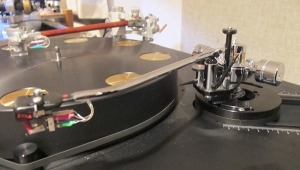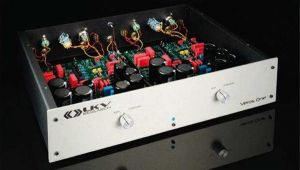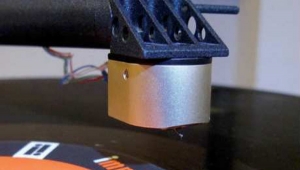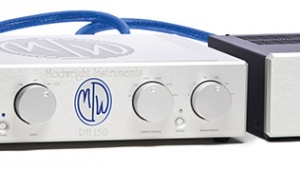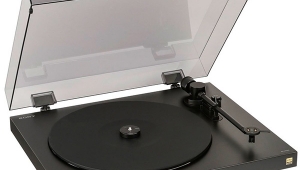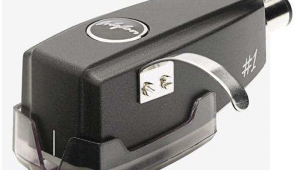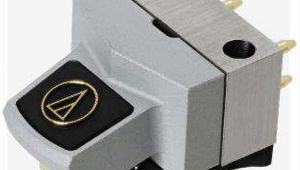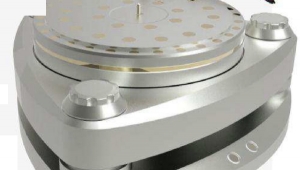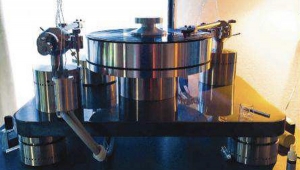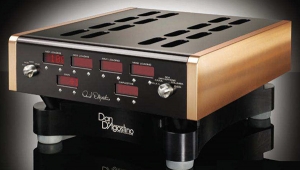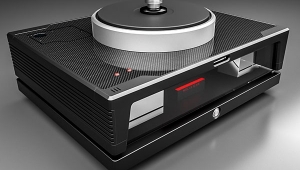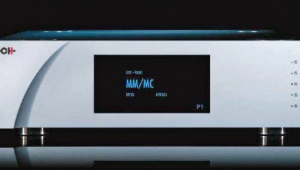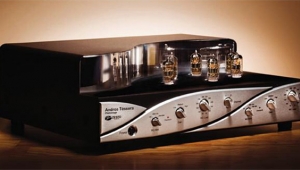| Columns Retired Columns & Blogs |
Analog Corner #261: Brahms Symphonies Direct to Disc from the Berlin Philharmonic
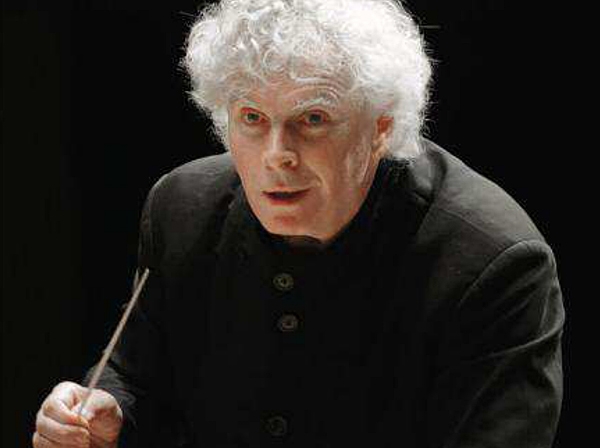
In November 2016, the Berlin Philharmonic made a stunning record-release announcement: a boxed set of all four Brahms symphonies, conducted by Sir Simon Rattle, on six LPs, recorded and mastered direct to disc in September 2014. The release would be limited to 1833 sets—a quantity chosen in honor of the year of the composer's birth—at a price of €499 per set.
The Berlin Philharmonic last recorded direct to disc 70 years ago—right before commercial recordings were made on magnetic tape. To get the backstory of how and why the orchestra is producing this lavish, limited-edition boxed set, I spoke with the orchestra's principal cellist, Olaf Maninger.
Maninger began his studies with the renowned cellist János Starker, continued his training with Boris Pergamenschikow, joined the Berlin Philharmonic in 1994, and became the orchestra's principal cellist in 1996. He was deeply involved in the development of the orchestra's innovative Digital Concert Hall, and since 2008 has been general manager of Berlin Phil Media GmbH.
Since these recordings of the Brahms symphonies were made, Sir Simon Rattle has stepped down as the orchestra's musical director, a position he'd held since 2002. So this set represents a historical document. As I transcribed the recording of our conversation, I was struck by the cello-like quality of Maninger's voice and tonality. Or was it just my imagination?
Michael Fremer: In addition to being the principal cellist of the Berlin Philharmonic, you are involved in the orchestra's move toward releasing its own music.
Olaf Maninger: Yes. That's absolutely correct. It has been one of the tasks which seems to be kind of natural after doing this process called Digital Concert Hall, where we live stream all of our concerts. This [has now been done] for over ten years. Now we have so many people around the world interested in what we are doing that it also made sense to develop our own label. Symphonic music on all of the major labels is getting more and more difficult to be covered, so we just try to do it ourselves.
Fremer: Have you become involved in this aspect of the orchestra's business because you have an interest in audio or media, or were you just stuck with it?
Maninger: No, it's just because I am responsible. I am the managing director of collective media as one of the board members of the media part of the foundation [of the Berlin Philharmonic] . . . so it is my job.
Fremer: Are you an audiophile or hi-fi enthusiast?
Maninger: No! I love hearing music, and the more natural it is, the more I love it, and the more I'm convinced it's fantastic to hear classical music. But, as you can imagine, if you are playing, like, 150 concerts a year as a classical musician, and rehearsing all of these things and playing a lot of cello . . . I am not the person who can go home and then put on a Mahler symphony.
Fremer: That's true of many of the musicians I've talked to. They say, "This is my job, and when I'm home I just want to take it easy." So I understand that. You said something really interesting in a video on YouTube. You said that the idea was to reproduce the concert as accurately as possible—that these recordings had nothing to do with unconditional fidelity to the work. I understood that to mean that when a recording is made, usually engineers are trying to illuminate the piece by mixing it to highlight certain instruments, so that the listener can better understand the composition; but that in this direct-to-disc production, the intention was to put the listener in the concert hall—and, since the microphones were directly above Sir Simon Rattle's head, to give listeners his perspective. Is that accurate?
Maninger: Absolutely. I mean, in the '20s and '30s and '40s of the last century, it was technically not possible to make a recording with 50 microphones and 50 [tracks] and be later mixed. So [the kind of recording done for the boxed set] was limited by the technology, but it did produce just what the listener was hearing in the hall. And then the technological improvements meant you could do anything you want, and that meant you could help the composer by emphasizing instruments you normally don't hear so well in the concert hall during a performance. But if it is important for the ideas of the composer, in a [specific] place in the music, of course you can help. And that is one of the great things about recording nowadays—that you hear music completely different, and you understand things you normally don't in the concert hall. But, of course, the goal there is not to reproduce the sound you hear in the hall.
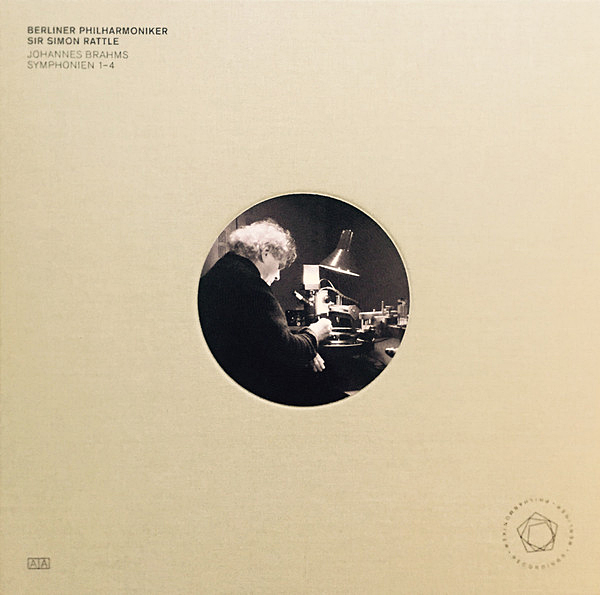
Fremer: Of course, many of us feel that those older recordings, where only two or three microphones were used, sounded more realistic, natural, and lifelike, more representative of what you do hear in a concert hall. When I had a subscription to the New York Philharmonic, I sat in the 20th row. What I heard was not like most modern recordings, which don't have a natural perspective. I prefer a recorded perspective where, even though you have to listen in further to hear all of the different parts . . .
Maninger: Absolutely. Also, the dynamic is completely different. There are so many people going for the first time to a concert—especially the young people who are hearing the CDs of classical music from their parents, and hear them on their sound systems at home [he's being an optimist!—MF], and they are hearing volumes like a rock concert, and they are incredibly disappointed when it's not as loud as they hear it at home.
Fremer: They're not used to listening in—they're used to being blown away!
Maninger: Absolutely.
Fremer: I know that in the old days, when symphonic recordings were made, the conductor, the producer, and the engineer would work together to get the recorded balance they were trying to achieve, which was not necessarily the same balance that the conductor would be trying to achieve in a concert performance. But in these live performances, was there any attempt to alter the balance of the orchestra for the benefit of the recording but to the detriment of the audience? Or was it simply that the concert was performed for the live audience, and the recording would simply be what it would be?
Maninger: For the audience—and there was no chance to alter anything in terms of balance. The only thing where you can change the balance is where you could put the two microphones, say, above the percussion, or you could put them directly above the double basses—but of course this would be extremely stupid. So it was just about finding the best spot in the hall. Of course, we all tried out different spots, which were all about three, four, five meters from where we first tried. Because it's quite obvious: If you go too much into the hall, then you lose the kind of transparency and directness, and you are too far away from the orchestra; and if you put it too direct—for example, in front of the conductor—then you will have all of the string instruments much too direct. So you need to place [the microphones] in the hall, where it begins to mix by itself the woodwinds, brass, and percussion, et cetera.
Fremer: Did they do recorded tests, and did you and other members of the orchestra and the conductor then sit and listen, to help determine the proper microphone placement? Or was this done by only the engineer?
Maninger: No. We did it! Of course . . .
Fremer: You say "of course," but you know, that's not always the case in these productions. So that's really good!
Maninger: [laughs] Of course, we are doing experiments, and the engineers have suggestions and can tell you what is technically possible [or] impossible—and of course, for getting the kind of sound you want to hear, you have to do it by yourself. We were two, three, or four people who were interested in the project—like the concertmaster [or] the solo oboe wanted to hear what it sounds like before [the recording]—but not being in charge, just being curious.
- Log in or register to post comments

